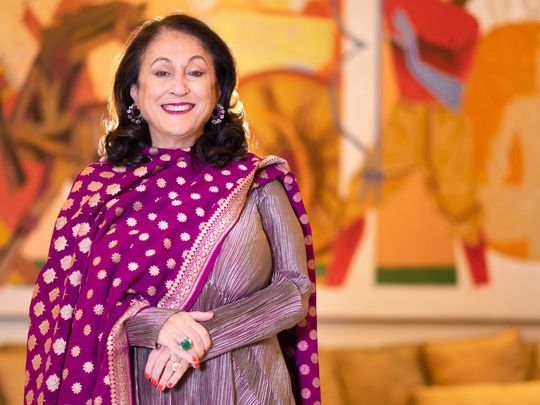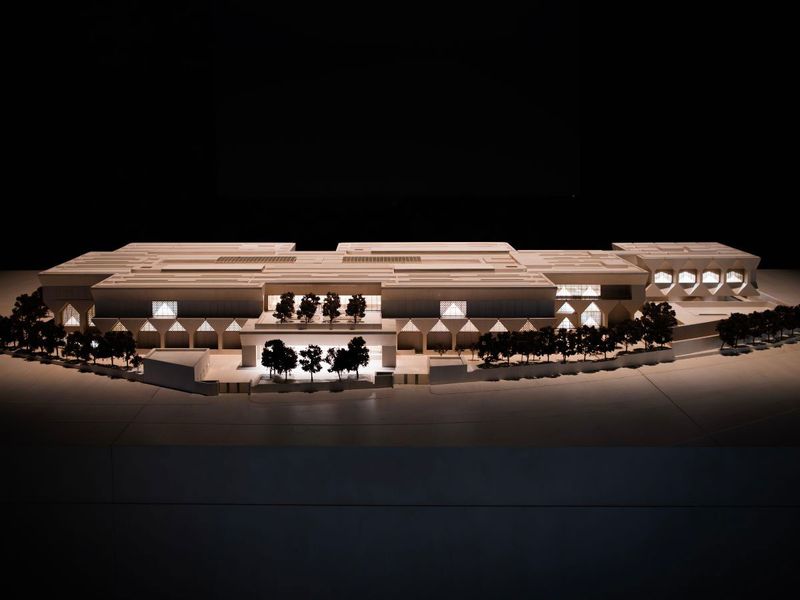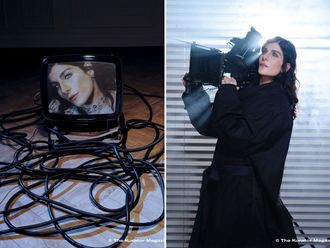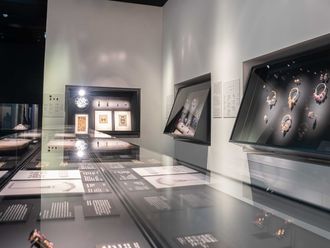
Many of the world’s best-known museums began as private initiatives driven by collectors with a philanthropic vision of bringing important works of art into the public domain. Among such institutions are the Getty Museum, the Guggenheim and Tate, the Whitney, the Isabella Stewart Gardner Museum, the Kimbell, and the Menil and Frick Collections. Added to their ranks is an institution in India—the Kiran Nadar Museum of Art—with holdings of more than twelve thousand works of modern and contemporary art focussed on South Asia.
Having already shown her collection to the public for thirteen years in an office space in Noida and a shopping mall in Saket, Kiran Nadar has now embarked on a capital project to create a permanent home for the collection. Designed by Sir David Adjaye with a footprint of one million square feet, the new KNMA will become a major cultural destination in Delhi, not only housing Kiran Nadar’s collection and a cycle of temporary exhibitions, but presenting itself as a leading centre for theatre, dance and performance.

A marketing professional married to Shiv Nadar, Founder of HCL Technologies, Kiran Nadar first started acquiring works of art in the 1980s in the process of decorating her Delhi house. The fact that she is one of India’s leading contract bridge players provides an idea of Kiran Nadar’s approach to the acquisition of works of art. Her collecting developed into a serious and substantial endeavour through which she understood the present challenges facing all those who create or appreciate art in South Asia today: the lack of government support and infrastructure for the arts, apparent in many ways, from shortcomings in art education to lack of engagement with international institutions. In 2008, following the acquisition at auction of a work of art of museum quality—Ram Kumar’s Vagabond of 1956—Nadar understood that her journey in the cultural sphere had moved beyond the boundaries of personal collecting.
Possessed of a collection that exceeded in scope and depth that of any national museum devoted to modern and contemporary art, she decided to establish an institution which filled the gap in art patronage, programming and education created by the lack of activity of the Indian government’s cultural sector. Her own museums paces in Delhi—open to the public without charge—have hosted significant exhibitions on themes as varied as post-Independence Indian architecture to Pop Art from South Asia and Tanjore Painting to retrospectives of artists such as Nasreen Mohamedi, Zarina and Amrita Sher-Gil. While the KNMA’s engagement with contemporary artists and its outreach activities reveal a deep commitment to fostering art practice and its understanding in India, the institution has also made its philanthropic presence felt among museums abroad, partnering with the likes of the Guggenheim, the Centre Pompidou and Samdani Art Foundation in the realisation on travelling exhibitions. Disappointed by the lack of visibility of her country on the international platform of contemporary art, Nadar funded India’s national pavilion at the Venice Biennale in 2019, a project which was received with critical acclaim.

Such is the breadth of Kiran Nadar’s collection and the depth of her vision that MoMA Director Glenn Lowry says of the new David Adjaye complex that “It will be India’s national modern and contemporary art museum, for all intents and purposes.” Inspired by her experiences at the Metropolitan Museum of Art, MoMA and Louvre Abu Dhabi, Nadar has determined that the institution be cross-cultural in approach, viewer-centric and inviting to both domestic and international visitors, children and adults. The space will contain eleven galleries for temporary exhibitions and rotating displays of the collection, ranging from installations and digital art to Indian miniatures and masterpieces of modern art. These will be complimented by two auditoria for the performing arts and conferences. Drawing from multiple architectural traditions and set in a park landscape, the building and its programme are conceived above all to help overturn the general apathy towards the museum experience in India today.
Kiran Nadar’s mission to inspire and educate through her collection represents her personal journey and her own sense of conviction in the importance of art as an inspiring and unifying force. While she is without doubt the single greatest collector of Indian art of her time, fortunately, as she herself remarks, Kiran Nadar’s initiative is not the only one in India today—we have recently seen the establishment of the Nita Mukesh Ambani Cultural Centre in Mumbai, the Serendipity Arts Festival and Sunaparanta Centre for the Arts in Goa and the Museum of Art & Photography in Bangalore.






